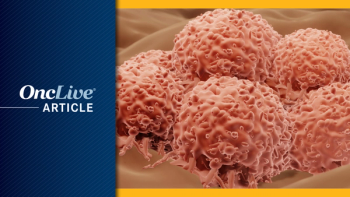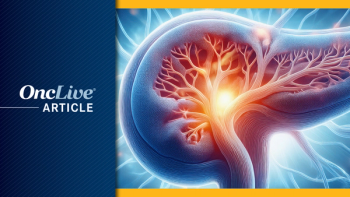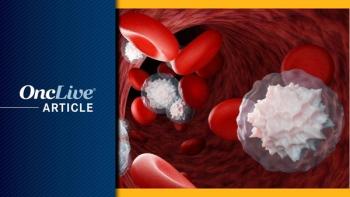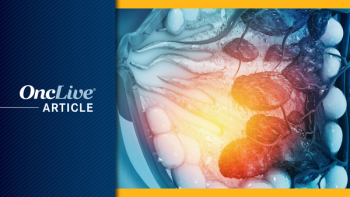
Lurbinectedin/Irinotecan Shows Impressive Antitumor Activity in Relapsed SCLC
February 15, 2021 - The combination of lurbinectedin and irinotecan following relapse on frontline treatment was found to induce promising antitumor activity in patients with small cell lung cancer.
The combination of lurbinectedin (Zepzelca) and irinotecan following relapse on frontline treatment was found to induce promising antitumor activity in patients with small cell lung cancer (SCLC), according to data from the expansion portion of a phase 1/2 trial presented during the International Association for the Study of Lung Cancer 2020 World Conference on Lung Cancer (WCLC).1
The doublet elicited an objective response rate (ORR) of 62% in 21 patients with SCLC, with a clinical benefit rate (CBR) of 81% and a disease control rate (DCR) of 90%. The median duration of response (DOR) with lurbinectedin/irinotecan was 6.7+ months (95% CI, 3.0–not reached). Moreover, the median progression-free survival with the regimen was 6.2+ months (95% CI, 4.3-8.5).
“The combination of lurbinectedin and irinotecan after failure of first-line therapy demonstrates good activity in [patients with] SCLC," Santiago Ponce-Aix, MD, head of the Lung Cancer Unit of the Medical Oncology Service of the 12 de Octubre University Hospital in Madrid, Spain, said in a presentation on the data. “This has been observed in patients with platinum-sensitive and nonsensitive disease.”
Patients diagnosed with SCLC often have a 5-year overall survival rate of less than 7%, according to Ponce-Aix. Lurbinectedin was developed to induce activity through the inhibition of transactivated transcription and modulation of the tumor microenvironment. Preclinical research examining lurbinectedin in combination with irinotecan showed synergistic activity, which provided the rationale for the phase 1/2 trial further examining the doublet.2
In June 2020, the
The phase 1b portion of the phase 1/2 trial presented during WCLC examined lurbinectedin in the following 3 cohorts: lurbinectedin escalation day 1 plus irinotecan at 75 mg/m2 on days 1 and 8 every 33 weeks (cohort A; n = 39), irinotecan escalation on days 1 and 8 plus lurbinectedin at 3 mg/m2 on day 1 every 3 weeks (cohort B; n = 23), and lurbinectedin at 2.6 mg/m2 on day 1 plus irinotecan at 50 mg/m2 on day 1 every 3 weeks (cohort C; n = 3).
Investigators identified the recommended dose to be lurbinectedin at 2 mg/m2 on day 1 plus irinotecan at 75 mg/m2 on days 1 and 8 plus granulocyte colony stimulating factor. Of the patients who received the regimen; 21 had SCLC, 20 had glioma, 21 had endometrial cancer, and 9 had sarcoma.
In the SCLC subgroup, the median age was 61 years, 52% were female, and 76% had an ECOG performance status of 1. Seventy-six percent of patients had lactate dehydrogenase greater than the upper limit of normal. Additionally, 81% of patients had extensive disease at the time of diagnosis, 29% had bulky disease, and 48% had disease in the liver. Notably, 24% of patients had central nervous system metastases and 38% of patients had previously received 2 lines of treatment. Seventy-one percent of patients achieved either a complete response or partial response as their best response to previous platinum-based treatment, but 19% experienced disease progression.
Among the 13 patients who had a chemotherapy-free interval (CTFI) of 90 days or longer, the ORR was 69%, the CBR was 92.3%, the DCR was 100%, the median DOR was 7.5+ months and the median PFS was 8.1+ months. In the 8 patients with a CTFI of less than 90 days, the ORR achieved with lurbinectedin was 50%, the CBR was 62.5%, and the DCR was 75%; the median DOR and PFS were 7.5+ months and 4.8+ months, respectively.
When looking at efficacy with the combination by setting, the ORR achieved in those who received it in the second-line setting (n = 13) was 77% versus 38% in those who received it in the third-line setting (n = 8). The CBRs were 92.3% and 62.5%, respectively, while the DCRs were 100% and 75%, respectively. Moreover, the median DOR was more than doubled in those who received the regimen in the second-line setting, at 6.7+ months, versus 3.0+ months in those who received it in the third-line setting. The median PFS was 8.5+ months versus 4.2+ months, respectively.
The combination showed “stabilization of disease with nice reduction in the diameter of the tumor” in patients with chemotherapy-sensitive and -resistant disease, Ponce-Aix noted. “Also, patients can respond very nicely to [the regimen] even with brain metastases, and we saw very nice responses that proved to be long-lasting. The median time to response is around the third cycle.”
Moreover, patients who received platinum and etoposide in previous lines of treatment were able to achieve favorable responses when the combination regimen was given in the second line. The median time to progression was 6.5 months and PFS was 5.5 months.
Regarding safety, 100% of patients experienced any adverse effect (AE), with 76.2% of patients experiencing grade 3 or higher effects. Moreover, 28.5% of patients experienced serious toxicities. The most frequently reported treatment-related toxicities included fatigue (66.7%, grade 1/2; 23.8%, grade 3/4), nausea (57.1%, grade 1/2), vomiting (38.1%, grade 1/2; 4.8%, grade 3/4), and diarrhea (33.3%, grade 1/2; 28.6%, grade 3/4).
The most commonly experienced laboratory abnormalities included anemia (81%, grade 1/2; 19%, grade 3/4), neutropenia (33.3%, grade 1/2; 61.9%, grade 3/4), thrombocytopenia (66.7%, grade 1/2; 9.5%, grade 3/4), alanine aminotransferase (57.1%, grade 1/2; 4.8%, grade 3/4), and aspartate aminotransferase (61.9%, grade 1/2; 4.8%, grade 3/4).
Moreover, 28.6% of patients experienced dose delays that were related to treatment, while 52.4% experienced dose reductions.
“Toxicity is transient and manageable, being mainly hematological abnormalities, fatigue and diarrhea, with no discontinues due to AE and no toxic deaths [were reported],” concluded Ponce-Aix.
The cohort of patients with SCLC has been expanded to up to 47 patients.
References
- Ponce S, Coté GM, Falcón A, et al. Efficacy and safety profile of lurbinectedin-irinotecan in patients with relapsed SCLC: results from a phase Ib/II trial. Presented at: 2020 International Association for the Study of Lung Cancer 2020 World Conference on Lung Cancer; January 28-31, 2021; Virtual. Abstract OA11.03.
- Harlow ML, Maloney N, Roland J, et al. Lurbinectedin inactivates the Ewing sarcoma oncoprotein EWS-FLI1 by redistributing It within the nucleus. 2016;76(22):6657-6668. doi:10.1158/0008-5472.CAN-16-0568
- Trigo J, Subbiah V, Besse B, et al. Lurbinectedin as second-line treatment for patients with small-cell lung cancer: a single-arm, open-label, phase 2 basket trial. Lancet Oncol. 2020;21(5):645-654. doi:10.1016/S1470-2045(20)30068-1

























































































